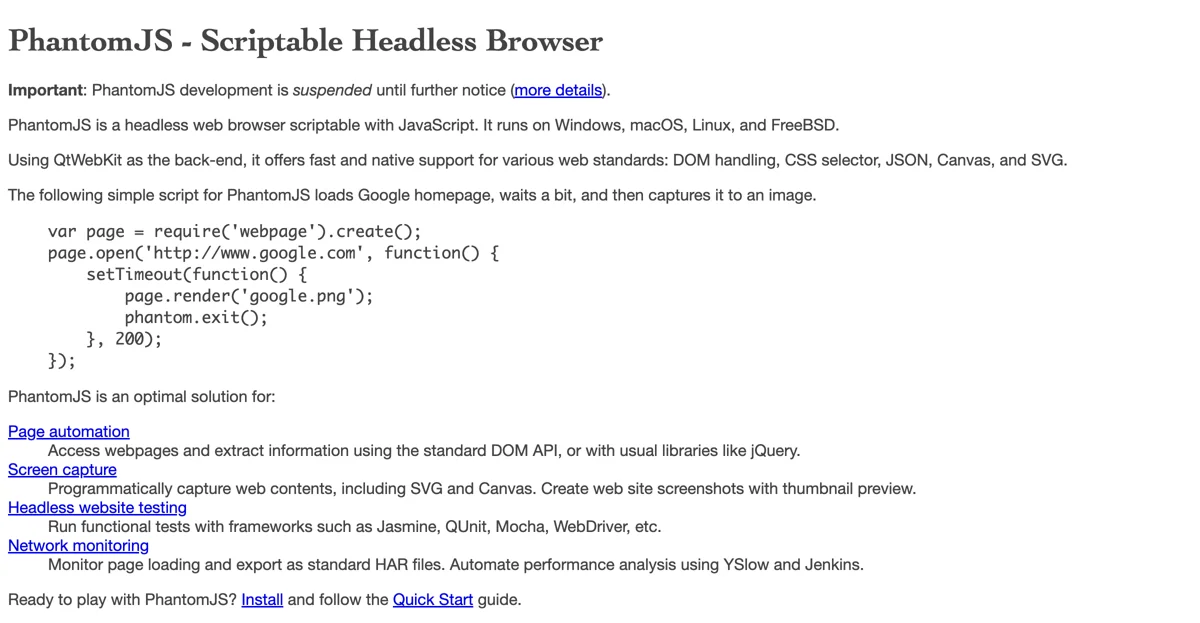PhantomJS is a remarkable tool in the realm of web-related tasks. It is a headless web browser that can be scripted using JavaScript, making it highly versatile. Operating on various platforms like Windows, macOS, Linux, and FreeBSD, it offers broad compatibility.
At its core, PhantomJS utilizes QtWebKit as the back-end, which allows for fast and native support of numerous web standards. This includes efficient handling of the DOM, seamless operation with CSS selectors, smooth processing of JSON, and excellent support for Canvas and SVG.
One of the simplest yet powerful applications of PhantomJS is demonstrated by a basic script. For instance, it can load the Google homepage, wait for a short period, and then capture it as an image. This showcases its ability to access webpages and perform actions like screen capture.
PhantomJS serves as an optimal solution for multiple scenarios. In terms of page automation, it enables users to access webpages and extract valuable information either through the standard DOM API or with commonly used libraries such as jQuery. When it comes to screen capture, it can programmatically capture web contents, covering not only regular HTML but also SVG and Canvas elements. This is particularly useful for creating website screenshots with thumbnail previews.
Another significant area is headless website testing. With PhantomJS, one can run functional tests using popular frameworks like Jasmine, QUnit, Mocha, WebDriver, and more. It also plays a crucial role in network monitoring, allowing users to monitor page loading and export the data as standard HAR files. Additionally, it can be integrated with tools like YSlow and Jenkins for automating performance analysis.
To get started with PhantomJS, one can simply install it and follow the Quick Start guide. For those seeking more in-depth knowledge, there are resources available such as the FAQ section, numerous examples to explore, and the complete API documentation. The source code, issue tracker, and other development-related information can be found on github.com/ariya/phantomjs.
Overall, PhantomJS offers a wealth of capabilities for web-related tasks, making it a valuable asset in the toolkit of developers and those involved in web operations.

